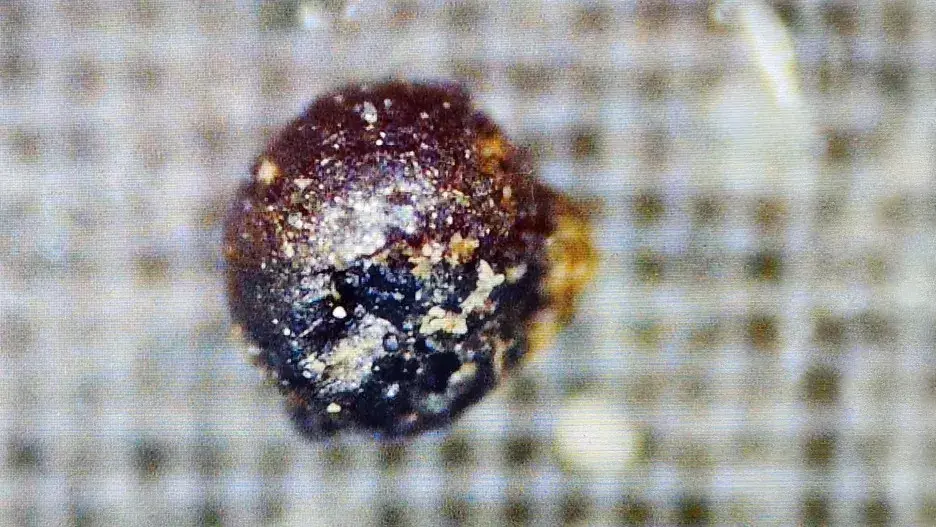
Harvard scientist finds alien artifacts at the bottom of the Pacific Ocean
Ever since a peculiar meteor was observed plummeting towards Earth, astrophysicist Avi Loeb became committed to uncovering its true nature, investigating whether it was an alien artifact from another world that had made its way to the Pacific.
Recently, Loeb, a distinguished astrophysicist from Harvard University, together with his dedicated group of researchers, announced progress in their quest.
Tiny metal spheres
In a mission undertaken in June near Papua New Guinea, they recovered what they believe are pieces of this enigmatic meteor. On Tuesday, Loeb communicated to the media that preliminary examinations suggest the tiny metal pieces might be alien artifacts, originating from beyond our solar system.
While it remains inconclusive whether these metallic spheres are artificial or natural in origin, Loeb is steadfast in his belief that these samples are unlike any metal alloy known to us.
Historic discovery
“This is a historic discovery because it represents the first time that humans put their hand on materials from a large object that arrived to Earth from outside the solar system,” Loeb said on Medium, his platform of choice for detailing the research and exploration. “The success of the expedition illustrates the value of taking risks in science despite all odds as an opportunity for discovering new knowledge.”
Loeb and his colleagues collaborated with EYOS Expeditions for this mission. With the financial backing of entrepreneur Charles Hoskinson, amounting to $1.5 million, they set sail on the Silver Star towards Papa New Guinea in order to retrieve fragments of a unique meteorite, labeled IM1, which entered our atmosphere in 2014.
Alien origin of the artifacts
This event went under the radar until 2019, when Loeb, together with Amir Siraj, a then-undergraduate at Harvard, stumbled upon data captured by U.S. government sensors. The genuine origin of the meteor, however, was only publicly recognized in 2022 by experts from the U.S. Space Command, who confirmed it to be from another solar system.
This acknowledgment was a pivotal moment for Loeb, who is also the brains behind the Galileo Project at the Harvard-Smithsonian Center for Astrophysics. This initiative is focused on the methodical pursuit of possible alien technologies.
Hundreds of microscopic spheres
Not long after the Space Command’s announcement, Loeb and his team were conducting an extensive search off the Manus Island coast, using a magnet-laden sled from their ship to probe the ocean floor.
The team’s patience and diligence were rewarded as they managed to collect over 700 microscopic spheres, detectable only under a microscope. “This is a historic discovery, marking the first time that humans hold materials from a large interstellar object,” Hoskinson said.
The Oumuamua comet
Interestingly, this isn’t the first time when Loeb has speculated about potential extraterrestrial artifacts. In 2017, the Oumuamua comet, with its odd form and trajectory, puzzled a large number of scientists.
Loeb proposed a captivating theory that this elongated object, reminiscent of a cigar, might be utilizing solar energy as a “light sail” akin to how sails utilize wind on Earth. He even postulated that this comet could be an extraterrestrial vessel. A later study, however, credited its unusual orbit to a common phenomenon observed in icy comets.
Nevertheless, Loeb’s curiosity remained unwavering. While reviewing data from the Center for Near Earth Object Studies at NASA, he, alongside Siraj, unearthed information about IM1, initially detected in 2014. Given its remarkable velocity – twice faster than nearly all the stars in the vicinity of the sun – the researchers deduced its interstellar origin in an article published in the Astrophysical Journal.
Unique elemental composition
Moreover, recent evaluations have disclosed that some of these retrieved spheres boast a unique elemental composition, unparalleled in our solar system. Dubbed as the “BeLaU” composition due to its Beryllium, Lanthanum, and Uranium content, this alloy is distinct from any known to Earth or its neighboring planets.
Further analysis is underway across renowned institutions, including Harvard University, University of California, Berkeley, the Bruker Corporation, and the University of Technology in Papua New Guinea.
Loeb and his colleagues plan to soon publish a scientific paper detailing their findings, while Rob McCallum from EYOS commented on the expedition’s success, hinting at potential future endeavors.
“The findings demonstrate the success of the first exploratory expedition and pave the way for a second expedition to seek more data,” McCallum said. “We love to enable our clients’ projects anywhere on Earth, but this one is out of this world.”
Image Credit: Avi Loeb
—
By Andrei Ionescu, Earth.com Staff Writer
Like what you read? Subscribe to our newsletter for engaging articles, exclusive content, and the latest updates.
—–
Check us out on EarthSnap, a free app brought to you by Eric Ralls and Earth.com.












